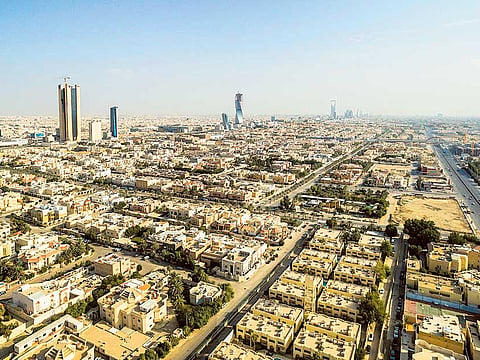Saudi Arabia reform targets need more clarity, analysts say
Subsidy reforms may face push back and reduction in public sector wage bills likely to be a slow process

Dubai: The much anticipated Saudi economic reform blueprint called National Transformation Plan (NTP) approved by the cabinet on Monday lacks details according to economists.
The plan outlines key economic objectives for Vision 2030, the Kingdom’s blueprint to diversify the economy, and continues to highlight the commitment of the government to transform the economy away from oil.
“The NTP emphasises fiscal consolidation and reform, setting bold targets to be reached by 2020. However, the plan provides few details on the mechanisms [or] initiatives to reach these targets, or on timelines,” said Monica Malik, chief economist of Abu Dhabi Commercial Bank (ADCB).
While the Vision 2030 outlined the long term strategic goals for the Kingdom, the NTP identifies specific objectives that need to be achieved in order to meet the Vision 2030 goals. For each objective, key performance indicators are identified, and these will be measured and assessed against the targets set.
“While some important targets have been made explicit, we had expected more detailed information and prospective timelines on privatisation programmes, economic diversification efforts and the implementation of new taxes. However, some these key targets are unspecified, or ‘under study’ in the current version of the NTP,” said Khatija Haque, head of MENA research at Emirates NBD.
Some comments about new income taxes were made by a cabinet minister speaking to the press, but the only objective relating to increasing non-oil revenue in the NTP document was to raise this from 163.5 billion riyals (Dh160.12 billion) to 530 billion riyals by 2020.
“We estimate that the fiscal consolidation measures (subsidy cuts, reduced spending on wages, raising non-oil revenue) amount to some SAR400 billion over five years, which is equivalent to around 2.5 to 3 per cent of GDP per annum. However, there are some uncertainties to our forecast without greater details of the fiscal plans,” Malik said.
Much of the savings from subsidy reforms of water and electricity prices (SAR200 billion) is likely to be reflected in the higher targeted non-oil revenue (rising to SAR530 billion in 2020 from SAR163.5 billion).
Goals to reduce government spending on wages by 5 per cent (by SAR24 billion) will likely largely be achieved by not replacing the people leaving the public sector workforce and benefit cuts.
Analysts say fiscal consolidation at this pace could be difficult to implement, especially given the cumulative impact of the reforms on economic activity. The subsidy reforms introduced in December 2015 and January 2016 were equivalent to some 1.5 to 2 of 2016 GDP, and have already seen some signs of pushback.
While it is widely expected that the government will gauge economic growth, social developments and the oil price before introducing the fiscal reform measures, many of the measures previously announced to boost non-oil revenues will need time to be studied and formulated.
“Overall, we believe that the government’s annual spending levels over the five year period will largely be determined by oil price developments. Following the release of the NTP, we have not made any changes to our non-oil revenue or government spending forecasts for 2016. We continue to see government expenditure contracting by 7.5 per cent in 2016, with a greater fall in capital spending,” said Malik.
The NTP reiterates that the private sector will have to play a stronger role in the economy, including on the vital employment and investment fronts. The plan looks for the private sector to create 450,000 jobs by 2020. But, this looks an ambitious target in the context of increased costs from fiscal reforms and subsidy reforms impacting the margins of the private sector.
Sign up for the Daily Briefing
Get the latest news and updates straight to your inbox



